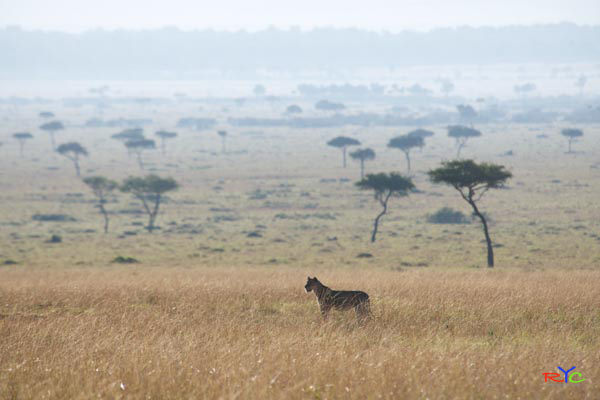
For many travelers, an African safari is the adventure of a lifetime. To see such beautiful places and awe-inspiring wildlife up close is a dream come true—especially if you’ve only seen them in pictures or at a zoo. Unfortunately, some animals you will see aren’t so friendly. Africa is home to some of the most dangerous snakes in the world. For your safety, it’s important to stay educated and know what may cross your path. Keep reading to learn about the deadly snakes in Africa, which you should avoid while traveling through these gorgeous lands.
Black Mamba
Black mambas are known as one of the fastest and deadliest snakes in the world. Typically, black mambas can be found in Southern and Eastern areas of Africa, and like to make their homes in hollow tree trunks or rocky hills, although they can adapt to a variety of habitats. Although they have a reputation for being highly aggressive (in South Africa, their bite is known as “the kiss of death”), mambas are also known for being shy and will at first try to hide instead of attack. Still, be sure to keep your distance; mambas are highly venomous and their bites can be fatal if not treated properly.
Puff Adder
As one of the largest and most widespread deadly snakes in Africa, puff adders have a reputation for causing the most human deaths out of any other African snakes. Their coloration makes them extremely hard to see, so be wary if you are on a walking safari or out on your own. Before attacking, the puff adder will warn its enemies by making a low hissing sound; its body will also inflate (hence the name “puff” adder) in order to look more intimidating. Like most snakes, the puff adder will attack if it feels it cannot flee to safety.
Boomslang
Boomslang snakes are native to Sub-Saharan Africa and prefer wooded grasslands (in Afrikaans, their name means “tree snake”). While human deaths are rare, boomslangs are still considered highly dangerous due to their hemotoxic venom, which causes blood to stop clotting. This can cause internal and external bleeding that may be fatal, but it can also cause hemorrhages into other tissues. However, boomslang venom is slow-acting; it may be hours before you show symptoms from a bite.
Egyptian Cobra
Most people are familiar with Egyptian cobras from movies or images of snake charmers, but they aren’t snakes you’ll want to see up close. As one of the largest cobra species in Africa, Egyptian cobras can be found in North Africa and throughout West Africa. Usually, these cobras will try to escape when they sense danger—but when severely threatened, they will strike. Their venom contains neurotoxins that affect the nervous system and can cause paralysis and respiratory failure. Many have suggested that Cleopatra committed suicide from an Egyptian cobra bite.
Cape Cobra
Cape cobras are found in Southern Africa and can survive in a variety of ecosystems. As cobras, they share many similarities to the Egyptian cobra. For instance, cape cobra venom is also neurotoxic and will cause respiratory failure. They are also similar in temperament, known to strike only if they feel threatened and cannot escape. Still, be sure to remain cautious around a cape cobra; their bites contain high levels of venom that can be deadly if there is no antidote available.
Gaboon Viper
Despite the gaboon viper’s huge size (they can grow up to 7 feet long and weigh up to 18 pounds!), they can be easy to miss because of their amazing camouflage. Gaboon vipers also move very slowly and usually try to keep still while they wait for their prey. Because of their reclusive nature, attacks from a gaboon viper are rare; however, bites from a gaboon viper should be treated as soon as possible. Viper bites inject a large amount of cytotoxic venom into the body and can be slow to heal.
Mozambican Spitting Cobra
Mozambican spitting cobras are appropriately named for their ability to “spit” venom onto their enemies from up to eight feet away. Commonly found in tropical and sub-tropical Africa, they are considered one of Africa’s most dangerous snakes because of the possible damage their venom can cause to various tissues. These cobras try to aim for the eyes; if venom gets in your eyes, it can cause permanent blindness. While actual bites from the spitting cobra are rare, be sure to treat any contact with venom as you would a snake bite.
Before you go on your adventure, know where the nearest medical facility can be found and so you can find proper treatment in an emergency. Remember, snakes are acting on instinct; you are visiting their home, and chances are they are just as afraid as we are. Fortunately, snake bites are rare during African safaris—but be sure to exercise caution and remain aware of your surroundings at all times.
To learn more safety tips, visit our website and read more of our blog. If you’re ready to book your safari, we have countless options available, so feel free to contact us at any time.
Jill Liphart for Roho Ya Chui, Travel Africa
